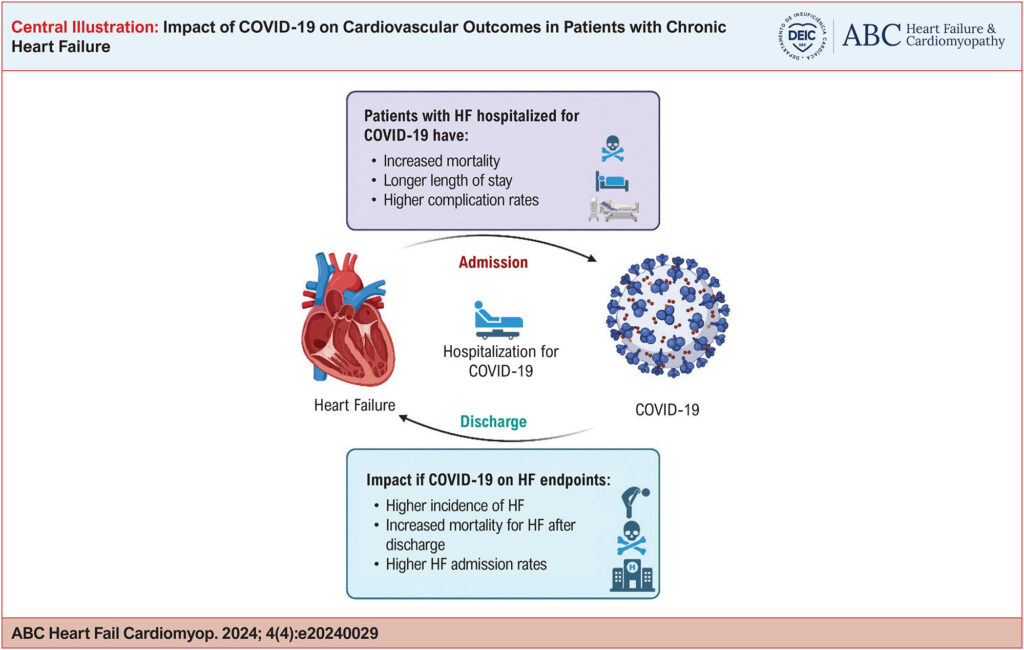ABC Heart Fail Cardiomyop 2024; 4(4): e20240029
Impact of COVID-19 on Cardiovascular Outcomes in Patients with Chronic Heart Failure
Abstract
SARS-CoV-2 infection affects multiple organs and systems, including the cardiovascular system. Cardiovascular complications include myocarditis, pericarditis, acute coronary syndrome, acute heart failure (HF), pulmonary hypertension, right ventricular dysfunction, and arrhythmias. Inflammation is a mechanism that is present in both COVID-19 and HF. The mechanisms of myocardial injury due to COVID-19 include direct damage by the pathogen, hypoxemic stress, endothelial dysfunction with associated thromboembolic phenomena, and effects of systemic inflammatory syndrome. Impaired cardiopulmonary reserve makes patients with chronic HF more susceptible to decompensation during the course of COVID-19. Coronary and pulmonary vascular alterations lead to worse prognosis in relation to ischemic and thromboembolic events. These patients have longer hospital stays, increased risk of mechanical ventilation, and higher mortality.
COVID-19 increases the incidence of cardiovascular complications in the first 12 months after acute infection, including cerebrovascular, arrhythmic, thromboembolic, and ischemic events, in addition to inflammatory heart disease. An increased risk of developing HF with preserved ejection fraction has also been reported. During the 12 months following acute infection, myocardial injury has been associated with persistent symptoms, as well as increased rates of hospital readmission and mortality.
Therefore, HF is related to increased mortality, length of hospital stay, and incidence of complications in patients who are affected by SARS-CoV-2, and individuals with chronic HF who have COVID-19 show a higher rate of events during post-COVID follow-up.
Keywords: Heart Failure; Prognosis
398


